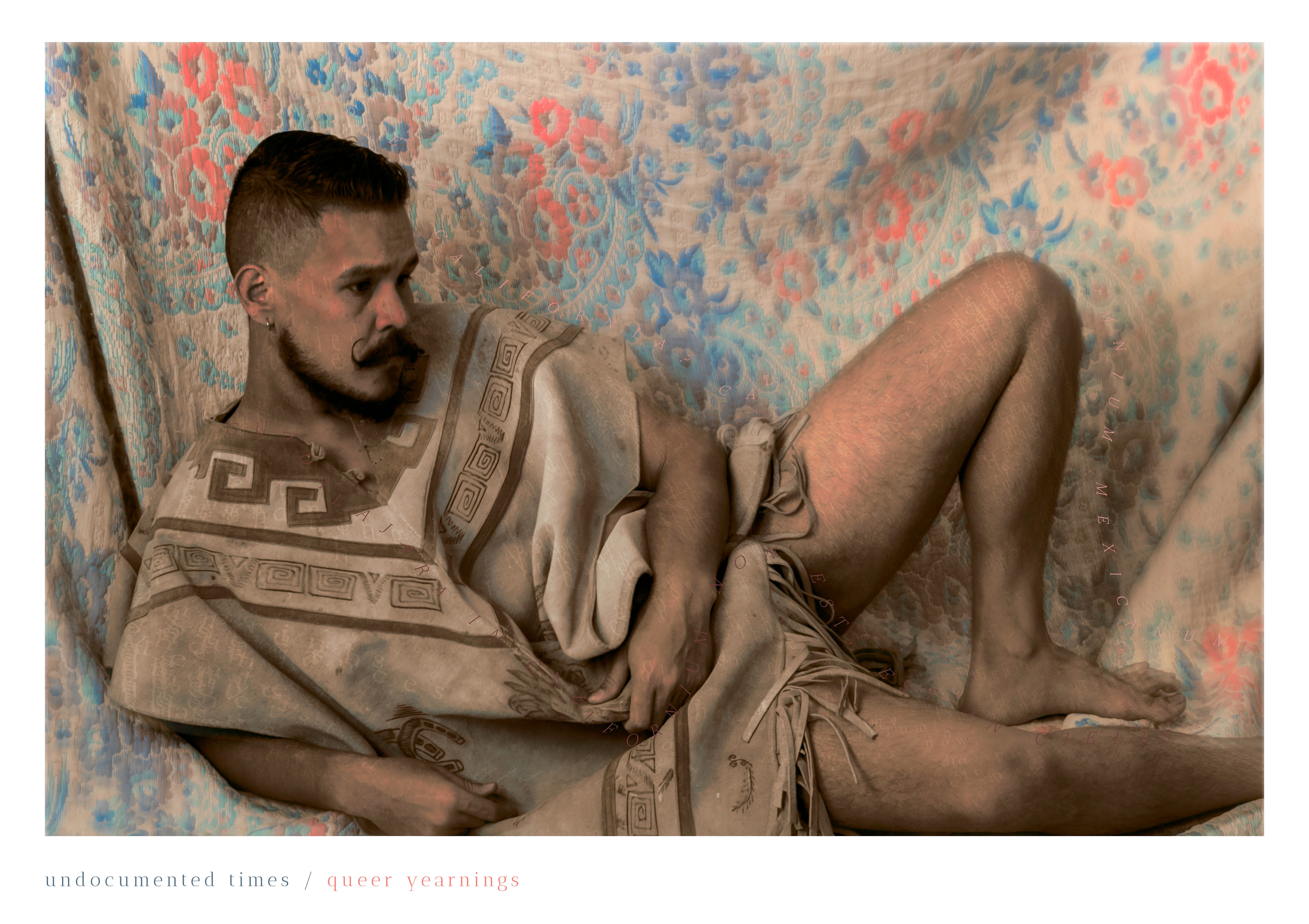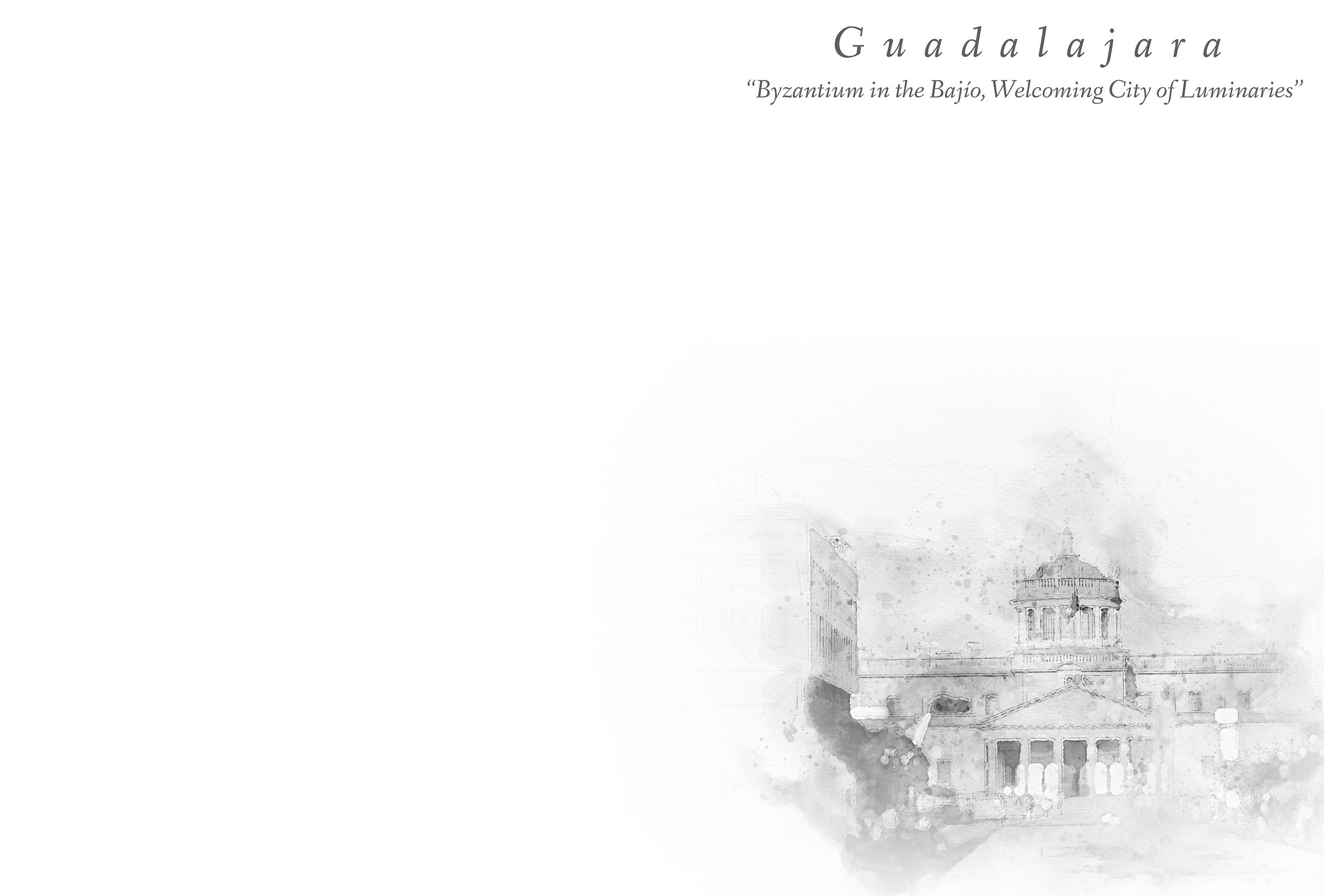Dream of the Chimera (unpublished)
Unseen, unsent artist Statement for the Oceanside Museum of Art, undocumented times/queer yearnings exhibition.
The postcard as an image object is the most traditional of what remains of analog image media. The innovations in printing technology and the near ubiquitous presence of made to order, highly cost-efficient printing services for marketing and souvenir materials in batches as small as a single item for everything from business promotion purposes to souvenirs at quinceañeras, weddings, baptisms and even yearly holiday celebrations has created a proliferation of objects that can’t be quite called ephemeral art (they will endure in the environment long after we are all gone) but whose stated purposes as a marker of an event or an object that bears witness to them is largely contrite and capricious. The postcard by contrast through its pedigree and its relation the history of photography and thus the history of imperialism, colonialism and late capitalist revolutions in aesthetics and art retains its resonance and still speaks to us in the same language as it always has.
The carte de visite, the cabinet card and the albums, bound books and exhibiting cabinets which housed them are the ancestors of the postcard. The post card, to my knowledge, is the only image object which has its own legal and regulatory framework that allows and facilitates its production and dissemination down to the grammage and the dimensions of the objects. The postcard that the United States Postal Service still creates special prices for mailing is not at all undifferentiated from the type images of Indian and Burmese beauties bought for pennies by British soldiers in Hyderabad and sent as proof of life or a kind of imperialistic Habeas Corpus throughout the Raj. The introduction of the railroads and the steam engines to the colonized world were the foundations, either through their presence or absence and as a consequence of their quality and their relationship to the flows of industrialized capital production and commodity consumption. The postcard and the image objects like them, however, in many ways construct our self-identities and it is these images of “real” people, “real” products, in “typical scenarios” that form the Id of our collective cultural understandings of the plot of land on this earth onto which we are ejected and in the era of borders and global surveillance—condemned to die on.
The postcard presents a vexing response to Roland Barthes’ theory of the punctum of the image. Perhaps selected from a tourist souvenir shop carefully by a visitor for a friend behind who is ill, finding the perfect container for an inside joke or that gives life to, not exactly the person’s tastes or interests, but the sender’s knowledge of such tastes and thus through a tertiary association of sentiments, the affection or care for that person. Other times it may be selected at random from a rack in an airport magazine shop without any care at all for the image and there the postcard is simply an object with an image and not exactly an image object. I doubt strongly that the image on the postcard or any other nostalgia object is important or looked at more than a handful of times throughout its life. The image is secondary to the handwriting or even to the postage stamp and the postal officer’s marks on the obverse. To hold it in our hand, to know that the message comes from the mind of our loved ones and that the scribbling elegant or illegible is the residue of their touch, that is the purpose of the postal card so stated.
When combined with historical images of “typical beauties” or “export quality products” these objects fuse our affective impulses with the national mythos and the project of nation-building from the wreckage of Europe’s slowly unfolding reckonings: the period of unprecedented carnage and loss of life that opened with the Napoleonic conflicts which lacquered Europe in blood but claimed first the Iberian crowns and set loose its mendicant colonies and which only closed with the Second World War that finally came for Britain, its colonies and then the hegemony of the British Pound. In that single sécousse of history, myriad nations were shaken free from the bondage of Empire and the post card and such images printed through photogravure or engravings of national themes which were supplemental and for audiences abroad eventually formed one core in the fabrication of new identities.
Mexico and New Spain’s history as a hub of intellectual and cultural life, the first truly multiracial, polyglot, dense and technologically advanced globalized metropolis with its printmakers and a pre-Columbian history of richly illustrated parchments and the fusion of the word and the image in highly innovative and provocative ways left behind a culture that was highly image-literate even at a time when the mendacity and parsimoniousness of Church and Crown’s governance left populations where the use of letters was a rarity in the vernacular and nonexistent in Latin, Greek or French or the lingua franca of the tlatoani or sapaincas. For a population whose use of letters was bound in chains, for whom even the word of God was locked behind the marble and alabaster panels of antiquity, the European use of painting, illustration, engraving and other forms of two dimensional images with high mimetic fealty for didactic purposes, the world of images was the main way in which text was experienced. The introduction of the photograph even as populations experienced a cruel sorting into ever more dichotomous social classes with increasing literacy was not an earthquake as in some cultures, but a gradual technological adaptation of the same intellectual and social forces which created the existing visual culture and visual literacy and, for indigenous peoples, a florid and highly inventive visual bilingualism. This is why, perhaps, the production of type images whose exemplar par excellence in form, content and quantity are those taken by the British Raj and whose counter-narrative and indigenization has its exemplar par excellence in the hand-painted images of the same country in the tradition of Mughal miniatures. It suffices to say these images do not have the same heady historical and cultural weight in Mexico.
After three-to-four hundred years of comprehensive ethnic cleansing and evangelization, those who would have been subjects for the photographers, their Lamprey grids and the coterie of ceramic objects which signified the Motherland had mostly taken on the appearance and the visual codes of Spain, then France, then England and then America. Here, the Casta paintings, the enconchados, Japanese byobu rebaptized as biombos with allegories of the Americas, the proliferation of Boucher and Rubens engravings of Biblical themes with angelic Frankish faces, those are the antecedents which collectively serve as a premonition of the future which would arrive with the camera and mass production of images from negative and plate. These, not the type image, built the paper walls of Criollo identity which we would inherit and build upon in the carnage of the Independence wars and their subsequent expulsion of Spaniards and restrictions on their rights to enter in the country, to make a living here or even to continue the historical project of incentivized or forced miscegenation in the service of primitive capital accumulation.
Mexico at the dawn of its history as an independent country is defined by the perplexing and paradoxical: the goal to attract European settlement to the Country to whiten the population and cut out the autochthonous tongue from the mouth to extract its solid gold teeth but refusing to let the Peninsulares and the Casa de Contratación in Sevilla enjoy ever again the benefits of an empire which had extinguished millions but whose biggest victims and most injured parties in the mind of the Creoles were the Creoles who were denied Margravedoms and Dukedoms in Oaxaca and Guerrero or even usufruct rights to the most profitable silk factories in Puebla. The images of Mexico which are comparable, those cartes des visites which do indeed exist for this reason seem all the more theatrical and bear the patina of a culture looking backwards at a classical mythology in an age of decadence before the withering heat of technological and economic advancement which it became obsessed with but could not faithfully reproduce.
It is not, perhaps, until the 20th century when the Porfiriato creates a highly politicized and active Diaspora that mass printed image objects like postcards, pamphlets, flyers and other ephemera printed on block began to proliferate in the national conscience. In the graphic arts and the creation of mechanically produced images, it is perhaps Posadas’ images are the most enduring in memory because they combined the most legible symbols of Creolization, hybridity, nepantla, mestizaje, and other forms of chimerization, with a highly resonant political posture against the new bourgeoisie and their afrancesado, European-facing fashions and false consciousnesses. They caricaturized the compradors and their buyers in Liverpool, Paris and New York. These are in my opinion not the most consequential. Dizzy from poppers listening to a house remix of a 90s telenovela theme song, in Guadalajara you can dislodge America from your throat on the same site where men with curled mustaches and soft glances once printed anti-reelection posters and newspapers that kindled and then fanned the embers of Revolution. Even they are perhaps not the most beautiful as the film posters, delicately hand drawn and painted and then produced by cutting edge color lithography and wheat pasted on the adobe or brick walls of the few cities whose movie theaters were the crucibles of a new, modern Mexicanidad at the height of Mexican moving-image-making far excel in the elegance and the aesthetic qualities which mass audiences use to evaluate images. Even the airline posters for 8-seaters to Acapulco are more refined and as images far more perduring and less inaccessible behind the accretion and sediment of mythos, politics, time and historical revisionism to which all images, objects and personalities in Mexican history are condemned to be crushed underneath and buried—as in the manner of pre-Columbian objects with their inferior portions bearing the most intricate engravings, reliefs and painted images.
The era of mass migration, the twin jets which brought down twin towers and cast a global net which immobilized millions and created a world where only two realities are possible: the Tourist and the Chimera. The world is increasingly divided into summarily unequal parts, as a small sliver of those with access to capital or those who possess it are granted seemingly barrier-less existence across the face of the earth while others are pinioned by their passports to plots of land they were dropped on. Wealth has always been a factor and a facilitator of mobility but only in this age has it been so consequential. Unable to own the land under their feet, unable to labor, unable to experience even the most rudimentary forms of independence and autonomy, the Chimera, is marked for transformation long before he is forced to pack his bags and trust the endurance of the tendons in his legs. As with any lottery, this fate affects certain regions more than others.
Jalisco’s pitiful and sorrowful role as Motherland to the world’s saddest and seemingly unceasing diaspora predisposed the population to a type of visual culture which would anchor its sentimental and political functions in a wounded nostalgia and hollow, ersatz identity that needed and demanded the production of these images, type images in truth, to make itself coherent in the face of and to resist the unceasing and institutionalized American assimilation efforts. Movies of charros, images of jimadores, post cards of Guadalajara’s chimeric Cathedral and its antithesis in the pulchritudinous baroque of the Basilica of the Virgen de Zapopan proliferated and flowed north with a desperation and hunger not unlike the movement of the people themselves. Unceasing, so relentless was this migration of icons and images that even in the contemporary period, the logos of Jalisco’s great corporations, De La Rosa and Farmacias Guadalajara key among them, become literally incarnated in tattoos and begin to festoon the clothing and accessories of the diaspora and, tellingly, their native-born American children.
In this world it seems to me obvious that the postcard with its abolengo, its pureza de raza, its impossibility of memory should take new life. The postcards seemingly ceaseless ability to cross borders and to evince existence seems to me the most interesting and provocative foil to the life of the clandestine migrant today. I recall, vaguely, the letters and postcards my father sent after he had migrated to the United States and I recall the fixation on the red and blue and white alternating slanted chevrons on the edges of the letter that bore a painful confession and wishes for a quick reunion. The stamp that bore a golden eagle and an American Flag to me were almost talismanic, they had a fetishistic quality as if they contained my father’s soul on their surface. His handwriting remains, to date, one of the clearest revelations of our interior differences. While mine is florid, languid, unstable and exuberant, his has always been square and tight. I have taught on more than one occasion that my father’s greatest gift to me was his face, his handsome and refined expressions that belied his inexplicable poverty and which bore the full mark of his vaunted, mythical-almost Spanish heritage Even when I was an infant, family members and neighbors teased that I made his expressions and that I even laughed like him.

Partly because, I recall deep in my mind the shape of the words right before I was literate and was able to understand what it meant for a father to miss his son from over 2500 miles away and to think that one day he would reunite. I wonder what it is like to think that this would be a happy day and not one full of regrets, which in the future would be used as a weapon against the poor unwitting middle aged man and his failures. That letter for me clearly set out the bounds of what the word could do, the power of the pen stroke or the pencil across the surface of the paper. Like many things, despite my fury and my disgust, my father remains the most important person in my life and the richest fount of knowledge a child of my age in my position could have had.
But, it was not a post card. There is something here. The absence of an image left me bereft of something tied to the physical world, something , sensorial to associate and anchor his words on. I was too young then to remember my father’s voice, though I have often been perturbed by the fact that I could on demand then recall his scent and the warmth of his bosom. If my father had sent a postcard with an image of Los Angeles or if he had sent a photograph of Disneyland, I am almost certain the effect would have been lost. The post card efficiently encapsulates the longing of distance, but also domesticates it. The wild danger of sorrow and yearning are gone when the postcard image imposes a rote and highly-structured means of desiring and of returning to those persons. This is why the post card to me has been the image object of late capitalism par excellence because if nothing else the image tames and disciplines the most intense and primal emotions. What else could bear lash and girdle upon a toddler with a desire to see the father he had not known since he was born? No painting, no sculpture, no work of architecture music or moving image could do that. Only the post card could. And yet, I never received one.
The difference between a post card and a letter is only the image but only in the mode and only in the structure that serves as a container and as a vessel for the immense longing any letter can contain. If a letter is the denuded human brain and the nude human emotion on the paper so inscribed by graphite or by ink, the post card is the same in a thin veil or a thin sheet of tulle or gauze. The contours are visible and for that reason seem all the more erotic and all the more obscene. The nude emotion is grotesque and unsettling, this is why all letters are always slightly embarrassing. But the post card through the magic of concealment, offering a thin layer of disbelief just thick enough, just opaque enough to let one project. Without the facility of canvas or a projector screen, the emotion is too intense, too honest that it becomes almost a caricature of itself. We do not understand anyone except through projection. That to me has always been clear since I was a small child.
It is the capitalist image object par excellence, with the talismanic magic of a semiotics so powerful that even the law is contorted to allow its movement across a world where millions are pinioned to their own starvation, poverty and despondence. While law around works of art an the trade in artifact and other antiquities abounds there is no other object I can think of that has its own category—and it must be said that the postal services rates and the concept of the post card built into the law is in fact a juridical and philosophical commitment to its life long into the future. The post cards juridical privilege is suspicious, isn’t its it? Why this? Why this card? What could be the use of such a thing?
It bears repeating that it is the scaffolding of empire, or the corset of late-capitalist affect.
I am left speechless, voided of all words or communicable sensations when I think of the millions, billions that have been spent to produce these images and send them across the globe for two-hundred years. The subsequent rise of the nostalgia hustle and the production of its residues is a monster we have not pondered enough. I wonder how many millions of trees have been felled, how many workers have had their hands burned by ammonia or lime to turn the pulp brilliant white, how many millions of years of carbon accumulation and ferment in the crust have been burned to shuttle them across the surface of the planet. A postcard may cost 15 Mexican pesos in a souvenir shop in Ajijic, but the hidden costs, the upstart costs in the parlance of the people I hate are infinite and scandalous. I am consistently scandalized by them.
To produce these images myself, to begin as self-portrait capturing a type of auto-anthropologization, a queer self-ethnography, and a performance of national and regional identities in the Migrant’s Time and the Migrant’s Space is a capitulation of sorts. The post card images which abound in this exhibit are each, in their own way, one means of crossing the barrier and returning to the human experience of time and of space. Each is one legal manner of entry, bearing the stamp and the dispensation of travel authority from a Government which bears down the full weight of its violence and its historically unprecedented, world-consuming resources on the necks and backs of me and millions like me around the world. That they are two-dimensional objects bearing my image and held by countless hands seems the most suitable medium to work in—in many ways I am a two-dimensional being, a Chimera created by historical accident, a vain and self-obsessed hybrid draft animal dying to recover something like the human in the performance, the dance of posing for a Camera which shocks and disgusts me with what it captures and the printed object, obsessively retouched, hand-colored and printed which rescues something like what others must experience as self-esteem or even self-knowledge.
My Return to Guadalajara after twenty-five years of living illegally has been a fracas. I cannot return to California. But, through the creation of the image, through its editing, through it’s creation and ultimately through the ego-shattering act of having a postal workers stamp a card with my likeness in a dramatic pose, I can find my way across the border. When I designed these, I imagined the hapless look of the worker at the USCIS processing center in Chatsworth who received it in the mail, with an accusatory note on the back. Would it change anything? Would that nudge anything or dislodge something? How many of these legal manner of entries would be enough for the Law, for Congress, for the bureaucrats? If I sent myself across the line through the arcane magic of the postal service which seems infinite in its interoperability and its interface between nations and across borders nine-hundred times, ten-thousand times, would this be enough to forgive my one crossing without such permission? Would the postal service ban me? Would these images receive the treatment of lewd images? Is my likeness lewd? Is my earnest desire to see the faces of those I love obscene? I don’t know.
Still, I hold myself in my hand and I deposit myself in a dark box and am shuttled away to let someone know I thought of them on the moment I wrote the card. That is the only way in which I can exist in the world, it’s the purpose for which I was born.







Great❤️
Never going to look at a post card the same. Thank you.